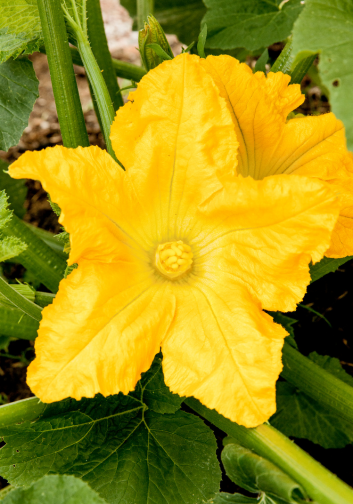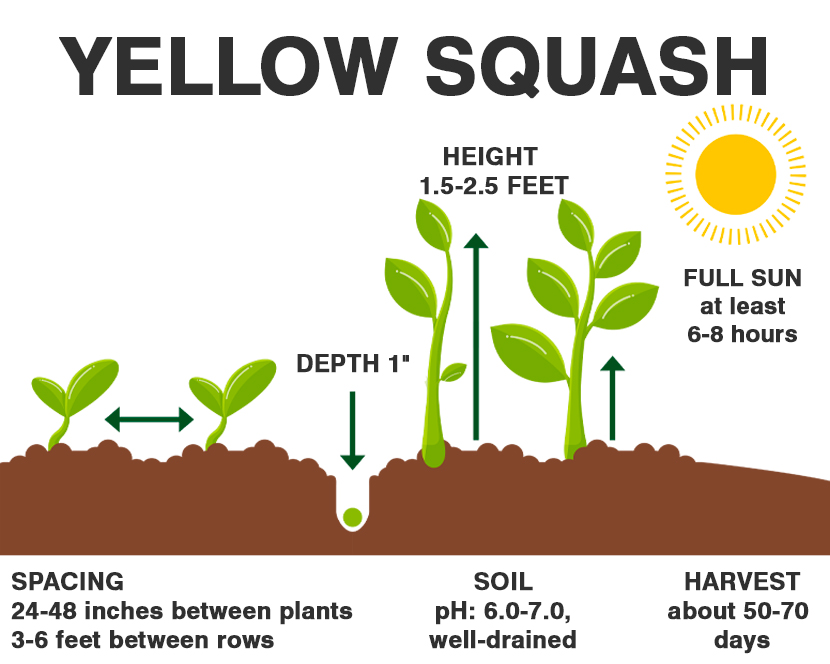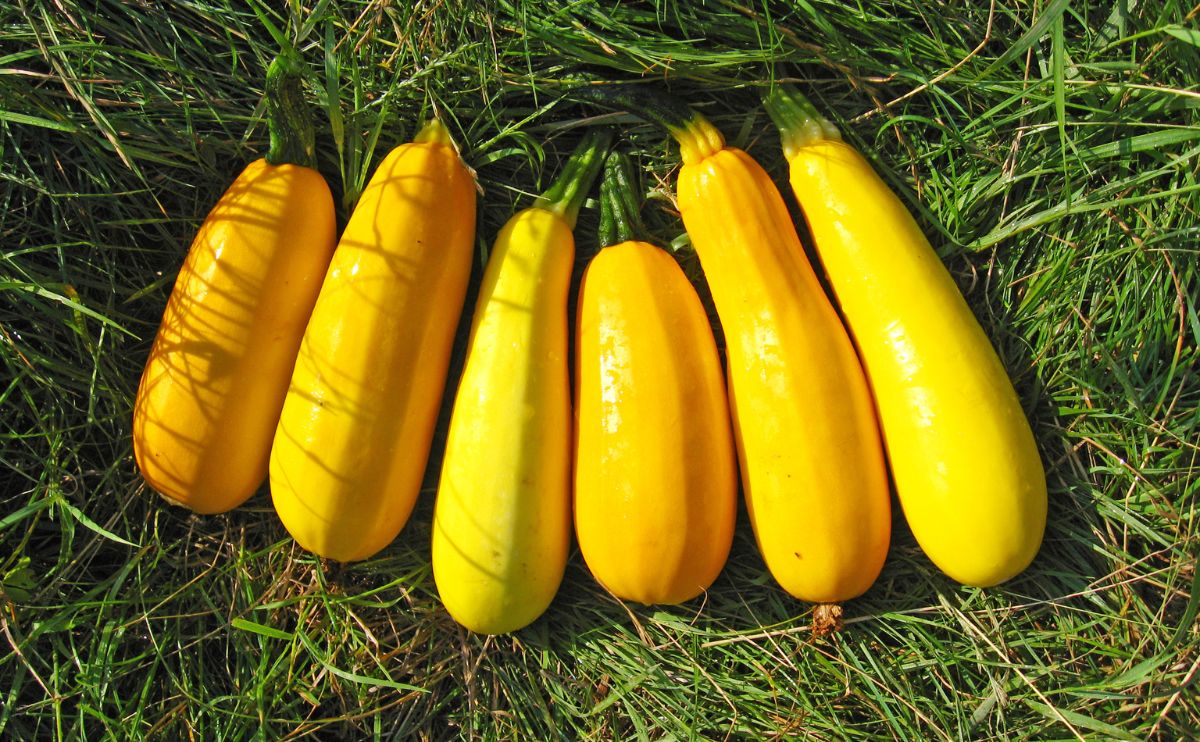Yellow squash, also known as summer squash, is a fast-growing vegetable that thrives in warm weather. It produces edible, tender fruits that are best harvested young. This plant requires full sun and well-drained soil, flourishing in gardens and raised beds across many regions. It is commonly planted after the last frost in spring and can be continuously harvested throughout the summer.

Yellow squash, scientifically known as Cucurbita pepo, is a prolific and popular summer vegetable known for its vibrant yellow fruits and quick growth. It belongs to the Cucurbitaceae family, which includes other squashes, melons, and cucumbers. This annual plant is cherished for its soft-skinned fruits that are best picked when young and tender, typically 6 to 8 inches in length.
| Common Name | Yellow squash, Summer squash |
| Botanical Name | Cucurbita pepo |
| Family | Cucurbitaceae |
| Plant Type | Annual |
| Size | 1.5–2.5 ft. tall, 4–6 ft. wide |
| Sun Exposure | Full sun |
| Soil Type | Rich, well-drained soil |
| Soil pH | 6.0–7.0 (slightly acidic to neutral) |
| Bloom Time | Late spring to summer |
| Hardiness Zones | USDA zones 2–11 |

When to Plant?
This will be determined by your planting zone. There is a final frost date for each area. As a result, you can plan your gardening activities around this date. Check our Frost Dates Across North America: First & Last Frost Dates Chart. However, the date will not be the same for every plant. Yellow squash should be planted after the danger of frost has passed and the soil has warmed in the spring. This is typically late spring in most climates.
How to Plant
- Soil Preparation: Prepare the garden bed by adding compost or aged manure to enrich the soil. Yellow squash thrives in well-drained, fertile soil.
- Sowing Seeds: Plant seeds directly into the ground, about an inch deep. You can also start seeds indoors about 2 to 3 weeks before the last frost date.
- Spacing: Space the plants about 24 to 48 inches apart in rows that are 3 to 6 feet apart. This allows for adequate air circulation and room for growth.

Continuing from planting and spacing, it’s important to manage initial growth conditions effectively for yellow squash. After the seeds have been sown, and as seedlings start to emerge, regular monitoring and maintenance are crucial for early development.
Water the young plants deeply and consistently, ensuring that the soil remains moist but not waterlogged. Over-watering can lead to root diseases while under-watering during the critical early stages can stunt growth. As the plants develop, thin them to the strongest specimens to prevent overcrowding and to ensure that each plant has enough space and resources to grow robustly.
How to Cultivate
- Watering: Yellow squash needs consistent moisture, especially when the plants are blooming and producing fruit. Water deeply once a week, more frequently during very hot weather.
- Mulching: Apply a layer of organic mulch around the plants to help retain soil moisture and suppress weeds.
- Fertilizing: Feed the plants with a balanced fertilizer every 4 weeks or as needed to support robust growth.
How to Harvest
- Yellow squash is best harvested when it’s young and tender, about 6 to 8 inches long. This usually occurs 50 to 70 days after planting, depending on the variety.
- Harvest by cutting the squash from the vine with a sharp knife or pruning shears, being careful not to damage the plant.
Common Pests and Diseases
Squash Vine Borer (Melittia cucurbitae)
Symptoms: The larvae of the squash vine borer burrow into the stems of squash plants, causing sudden wilting and collapse of the plant.
Cause: Insect
Management
- Use floating row covers over young plants to prevent adult moths from laying eggs on them.
- Regularly inspect plants and remove larvae by hand.
- Apply appropriate insecticides or use beneficial nematodes as a biological control method before larvae enter the stem.

Powdery Mildew (Podosphaera xanthii)
Symptoms: Appears as white, powdery spots on leaves and stems which can spread and cover the entire leaf, leading to yellowing and dried out foliage.
Cause: Fungus
Management
- Improve air circulation around plants by spacing them properly and pruning them.
- Water plants at the soil level in the morning to allow foliage to dry before nightfall.
- Apply fungicidal sprays that are effective against powdery mildew, and consider using sulfur or baking soda-based home remedies if mildew is caught early.


